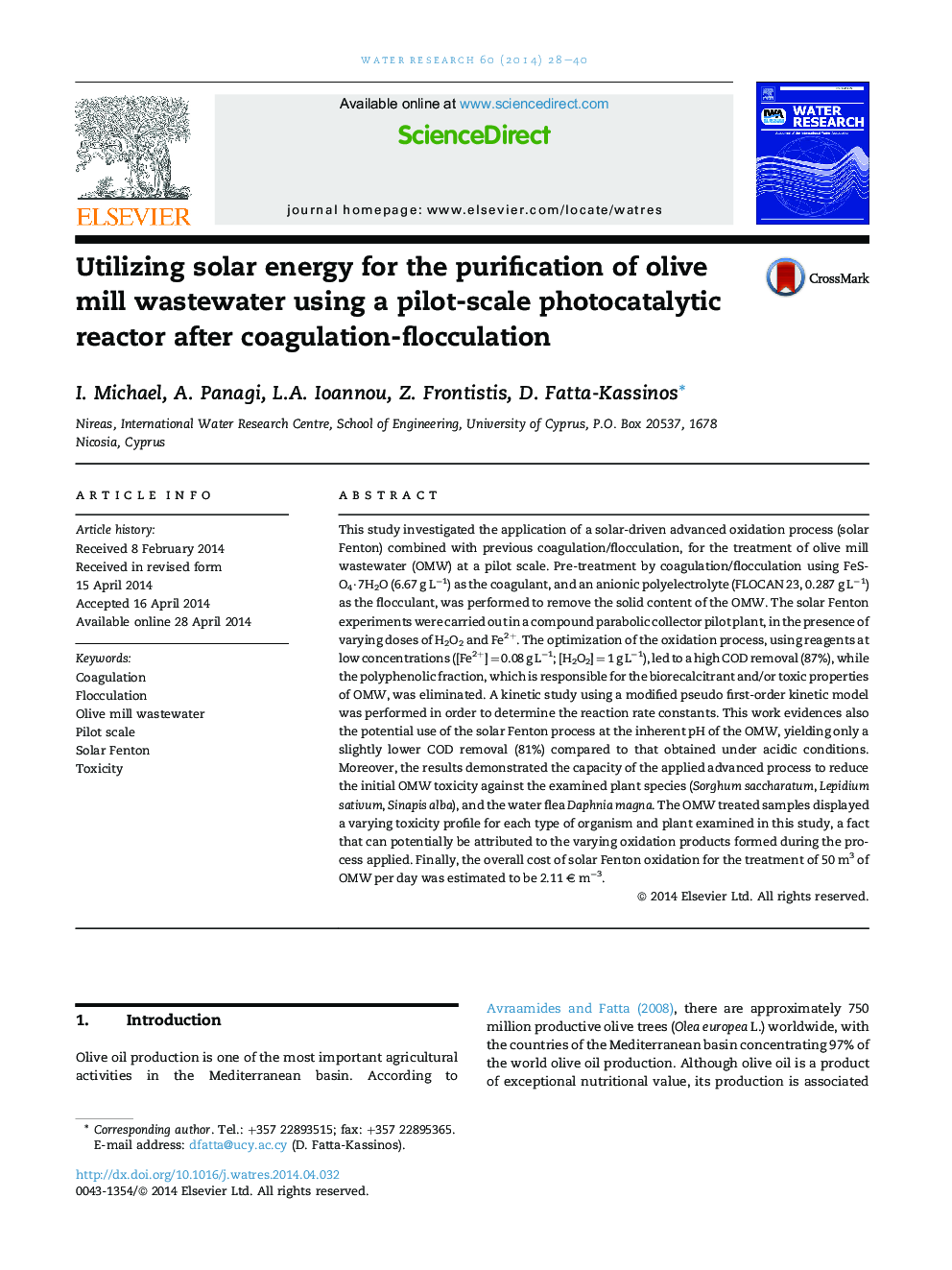| کد مقاله | کد نشریه | سال انتشار | مقاله انگلیسی | نسخه تمام متن |
|---|---|---|---|---|
| 4481494 | 1623108 | 2014 | 13 صفحه PDF | دانلود رایگان |
• OMW treatment by coagulation/flocculation followed by solar Fenton was investigated.
• Optimization of the oxidation process induced a high COD removal.
• The polyphenolic fraction was eliminated at the inherent pH of the OMW.
• The process was capable of achieving a reduction of the OMW toxicity.
• The treated samples displayed a varying toxicity profile towards the tested species.
This study investigated the application of a solar-driven advanced oxidation process (solar Fenton) combined with previous coagulation/flocculation, for the treatment of olive mill wastewater (OMW) at a pilot scale. Pre-treatment by coagulation/flocculation using FeSO4·7H2O (6.67 g L−1) as the coagulant, and an anionic polyelectrolyte (FLOCAN 23, 0.287 g L−1) as the flocculant, was performed to remove the solid content of the OMW. The solar Fenton experiments were carried out in a compound parabolic collector pilot plant, in the presence of varying doses of H2O2 and Fe2+. The optimization of the oxidation process, using reagents at low concentrations ([Fe2+] = 0.08 g L−1; [H2O2] = 1 g L−1), led to a high COD removal (87%), while the polyphenolic fraction, which is responsible for the biorecalcitrant and/or toxic properties of OMW, was eliminated. A kinetic study using a modified pseudo first-order kinetic model was performed in order to determine the reaction rate constants. This work evidences also the potential use of the solar Fenton process at the inherent pH of the OMW, yielding only a slightly lower COD removal (81%) compared to that obtained under acidic conditions. Moreover, the results demonstrated the capacity of the applied advanced process to reduce the initial OMW toxicity against the examined plant species (Sorghum saccharatum, Lepidium sativum, Sinapis alba), and the water flea Daphnia magna. The OMW treated samples displayed a varying toxicity profile for each type of organism and plant examined in this study, a fact that can potentially be attributed to the varying oxidation products formed during the process applied. Finally, the overall cost of solar Fenton oxidation for the treatment of 50 m3 of OMW per day was estimated to be 2.11 € m−3.
Figure optionsDownload high-quality image (263 K)Download as PowerPoint slide
Journal: Water Research - Volume 60, 1 September 2014, Pages 28–40
